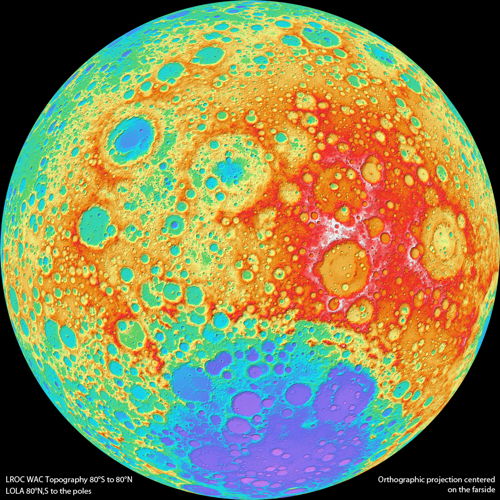A method to improve the accuracy of maps of the lunar surface was published last month in The Planetary Science Journal. Photoclinometry, also known as shape-from-shading, can dramatically improve the resolution of digital elevation models generated from Lunar Reconnaissance Orbiter data, but it’s apparently rather labour-intensive. From the Brown University press release: “The scholars outline in the study how advanced computer algorithms can be used to automate much of the process and significantly heighten the resolution of the models. The new software gives lunar scientists the tools to create larger maps of the Moon’s surface that contain finer details at a much faster pace, the researchers say.” [Universe Today]
Tag: LROC
More Moon Maps
Chinese scientists have released a high-resolution map of the Moon based on images from the Chang’e 2 spacecraft; the maps are at a resolution of seven metres (MoonViews, Universe Today). Phil Stooke compares the Chang’e 2 images with those from the Lunar Reconnaissance Orbiter Camera (LROC). Meanwhile, and speaking of the LROC, Jeffrey Ambroziak is making 3D anaglyph maps based on LROC data; he’s launched a Kickstarter campaign to create a 3D digital map of the entire Moon.
A New Lunar Topo Map

A new topographic map of the Moon from the Lunar Reconnaissance Orbiter: “Today the LROC team releases Version 1 of the Wide Angle Camera (WAC) topographic map of the Moon. This amazing map shows you the ups and downs over nearly the entire Moon, at a scale of 100 meters across the surface, and 20 meters or better vertically.” Late last year lunar topo maps were released that were based on laser altimeter data; presumably the WAC data, based on stereo observations, is better. Image credit: NASA/
